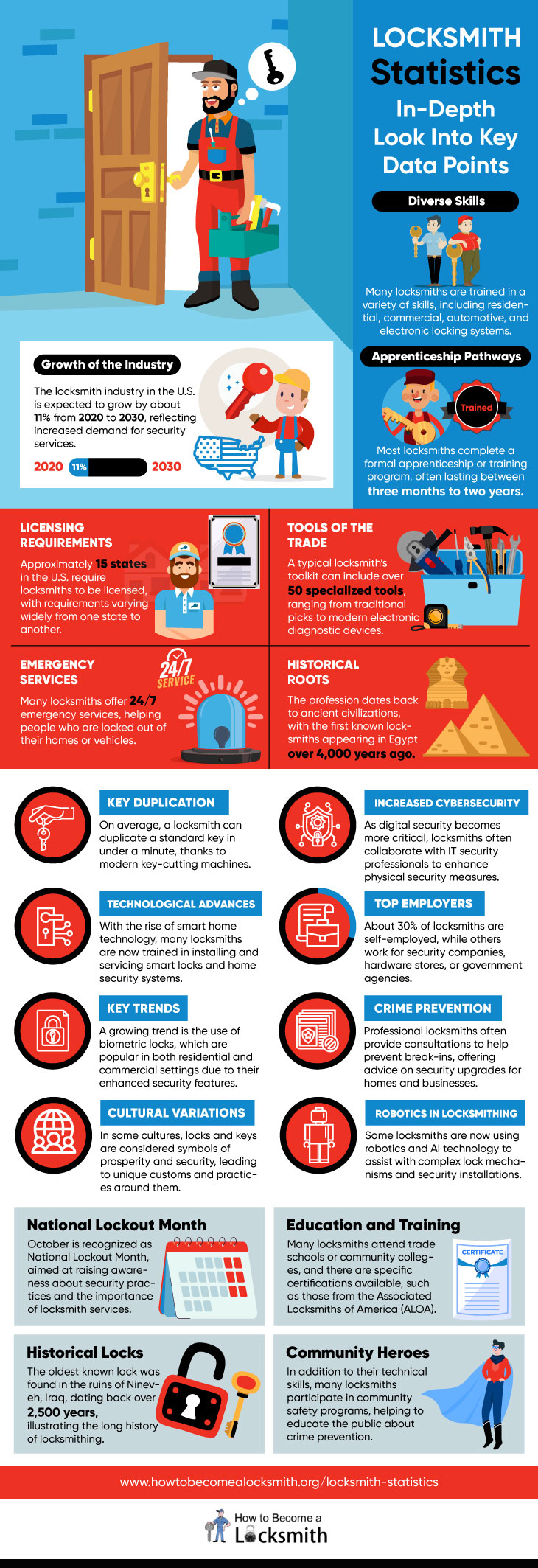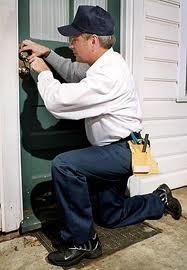Featured Online Program
Penn Foster
Request Info
Select Program:
- Locksmith & Home Security Technician
- Getting a career diploma in as little as 2 months.
- Gain experience with practical exercises and interactive assignments.
- Learn how to identify, create, and duplicate keys.
- Learn to work with several types of locks including safes, valuts, and auto.
- and more...

(Text version to the infographic above).
- Growth of the Industry: The locksmith industry in the U.S. is expected to grow by about 11% from 2020 to 2030, reflecting increased demand for security services.
- Diverse Skills: Many locksmiths are trained in a variety of skills, including residential, commercial, automotive, and electronic locking systems.
- Apprenticeship Pathways: Most locksmiths complete a formal apprenticeship or training program, often lasting between three months to two years.
- Licensing Requirements: Approximately 15 states in the U.S. require locksmiths to be licensed, with requirements varying widely from one state to another.
- Tools of the Trade: A typical locksmith’s toolkit can include over 50 specialized tools, ranging from traditional picks to modern electronic diagnostic devices.
- Emergency Services: Many locksmiths offer 24/7 emergency services, helping people who are locked out of their homes or vehicles.
- Historical Roots: The profession dates back to ancient civilizations, with the first known locksmiths appearing in Egypt over 4,000 years ago.
- Key Duplication: On average, a locksmith can duplicate a standard key in under a minute, thanks to modern key-cutting machines.
- Burglaries: Approximately 60% of burglaries occur through unlocked doors or windows, highlighting the importance of professional locksmith services.
- Technological Advances: With the rise of smart home technology, many locksmiths are now trained in installing and servicing smart locks and home security systems.
- Increased Cybersecurity: As digital security becomes more critical, locksmiths often collaborate with IT security professionals to enhance physical security measures.
- Top Employers: About 30% of locksmiths are self-employed, while others work for security companies, hardware stores, or government agencies.
- Key Trends: A growing trend is the use of biometric locks, which are popular in both residential and commercial settings due to their enhanced security features.
- Crime Prevention: Professional locksmiths often provide consultations to help prevent break-ins, offering advice on security upgrades for homes and businesses.
- Cultural Variations: In some cultures, locks and keys are considered symbols of prosperity and security, leading to unique customs and practices around them.
- Robotics in Locksmithing: Some locksmiths are now using robotics and AI technology to assist with complex lock mechanisms and security installations.
- National Lockout Month: October is recognized as National Lockout Month, aimed at raising awareness about security practices and the importance of locksmith services.
- Education and Training: Many locksmiths attend trade schools or community colleges, and there are specific certifications available, such as those from the Associated Locksmiths of America (ALOA).
- Historical Locks: The oldest known lock was found in the ruins of Nineveh, Iraq, dating back over 2,500 years, illustrating the long history of locksmithing.
- Community Heroes: In addition to their technical skills, many locksmiths participate in community safety programs, helping to educate the public about crime prevention.






Leave a Reply